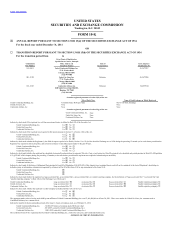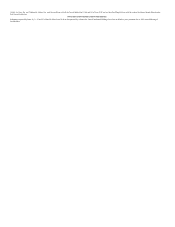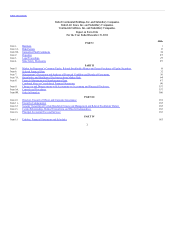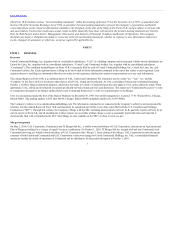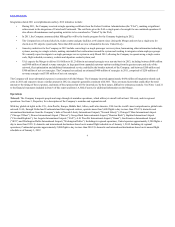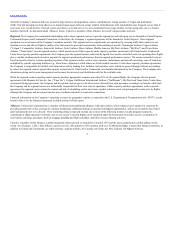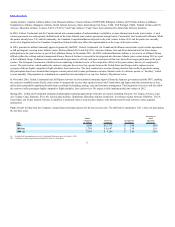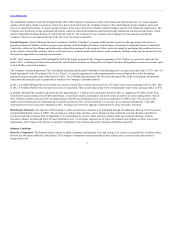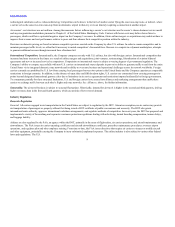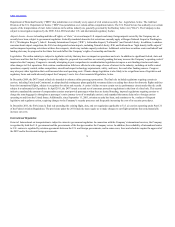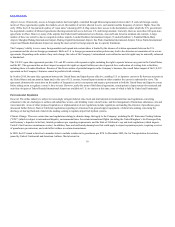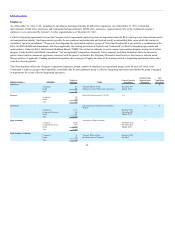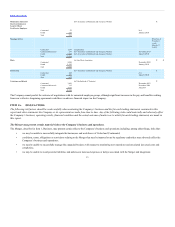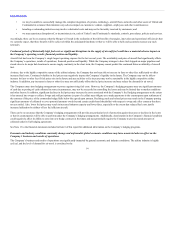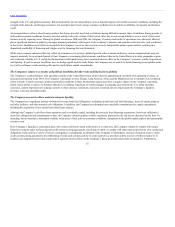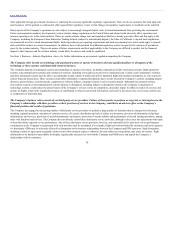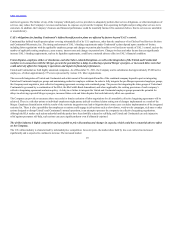United Airlines 2011 Annual Report Download - page 10
Download and view the complete annual report
Please find page 10 of the 2011 United Airlines annual report below. You can navigate through the pages in the report by either clicking on the pages listed below, or by using the keyword search tool below to find specific information within the annual report.
Table of Contents
Department of Homeland Security (“DHS”) has jurisdiction over virtually every aspect of civil aviation security. See , below. The Antitrust
Division of the U.S. Department of Justice (“DOJ”) has jurisdiction over certain airline competition matters. The U.S. Postal Service has authority over certain
aspects of the transportation of mail. Labor relations in the airline industry are generally governed by the Railway Labor Act (“RLA”). The Company is also
subject to investigation inquiries by the DOT, FAA, DOJ and other U.S. and international regulatory bodies.
Access to landing and take-off rights, or “slots,” at several major U.S. airports and many foreign airports served by the Company are, or
recently have been, subject to government regulation. Federally mandated domestic slot restrictions currently apply at Reagan National Airport in Washington
D.C. (“Washington Reagan”), John F. Kennedy International Airport (“JFK”), LaGuardia Airport (“LaGuardia”) and Newark Liberty. In addition, to address
concerns about airport congestion, the FAA has designated certain airports, including Newark Liberty, JFK, and LaGuardia as “high density traffic airports”
and has imposed operating restrictions at these three airports, which may include capacity reductions. Additional restrictions on airline routes and takeoff and
landing slots may be proposed in the future that could affect the Company’s rights of ownership and transfer.
The airline industry is subject to legislative activity that may have an impact on operations and costs. In addition to significant federal, state and
local taxes and fees that the Company is currently subject to, proposed taxes and fees are currently pending that may increase the Company’s operating costs if
imposed on the Company. Congress is currently attempting to pass comprehensive reauthorization legislation to impose a new funding structure and make
other changes to FAA operations. Past aviation reauthorization bills have affected a wide range of areas of interest to the industry, including air traffic control
operations, capacity control, airline competition, aircraft and airport technology requirements, safety, and taxes, fees and other funding sources. Congress
may also pass other legislation that could increase labor and operating costs. Climate change legislation is also likely to be a significant area of legislative and
regulatory focus and could adversely impact the Company’s costs. See , below.
In December 2009, the DOT issued a final rule intended to enhance airline passenger protections. The final rule included regulations requiring certain air
carriers, including United and Continental, to adopt detailed contingency plans applicable to tarmac delays exceeding three hours for domestic flights and four
hours for international flights, subject to exceptions for safety and security. A carrier’s failure to meet certain service performance criteria under the rule could
subject it to substantial civil penalties. In April 2011, the DOT issued a second set of consumer protection regulations in the form of a final rule. This second
initiative mandated the amount of compensation carriers must provide passengers when they are denied boarding, imposed regulations requiring carriers to
charge the same baggage fee throughout a passenger’s entire journey (even if on multiple carriers), and expanded the tarmac delay rule to foreign carriers
operating to and from the United States. Additionally, since September 11, 2001, aviation security has been, and continues to be, a subject of frequent
legislative and regulatory action, requiring changes to the Company’s security processes and frequently increasing the cost of its security procedures.
In December 2011, the FAA issued a final rule amending the existing flight, duty, and rest regulations applicable to U.S. air carriers operating under Part 121
of the Federal Aviation Regulations. The provisions under the 2011 final rule may require us to make changes to our flight operations that could materially
increase our costs.
International Regulation
International air transportation is subject to extensive government regulation. In connection with the Company’s international services, the Company
is regulated by both the U.S. government and the governments of the foreign countries the Company serves. In addition, the availability of international routes
to U.S. carriers is regulated by aviation agreements between the U.S. and foreign governments, and in some cases, fares and schedules require the approval of
the DOT and/or the relevant foreign governments.
9

